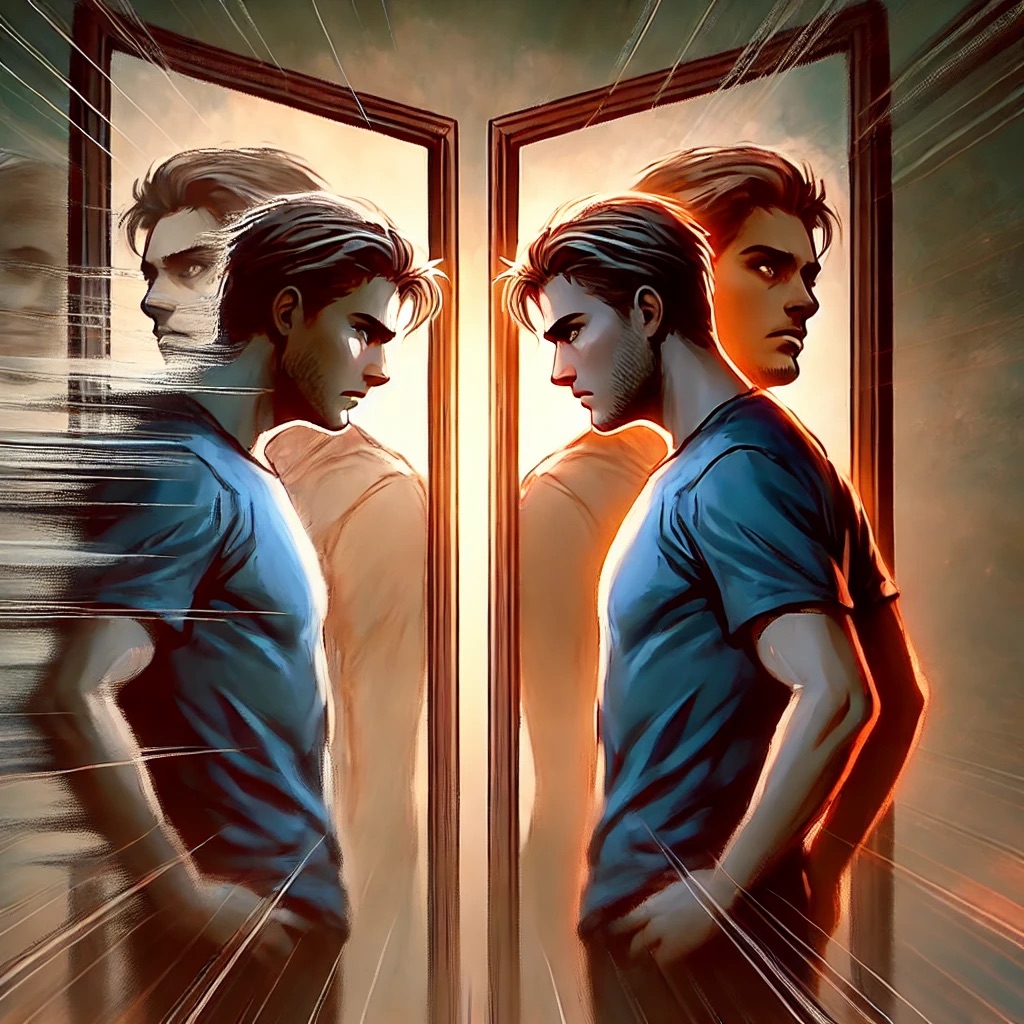
Introduction
In the vast expanse of storytelling, few elements resonate as deeply with readers as the portrayal of a character’s inner conflict. These internal struggles, often invisible to the outside world, are the crucible in which the true essence of a character is forged. They are not merely a tool for plot development or a method to create tension; rather, they are a reflection of the human experience itself. The portrayal of inner conflict in literature and other forms of narrative art taps into the most intimate aspects of our consciousness, exploring the dualities that define us: fear versus desire, morality versus ambition, love versus duty. This essay delves into the multifaceted nature of inner conflict within characters, examining its narrative power, psychological depth, and the way it mirrors the complexity of real-life human emotions.
The Nature of Inner Conflict
Inner conflict arises when a character is faced with two or more opposing desires, beliefs, or emotions. It is the tension that exists within a character as they grapple with choices that are often mutually exclusive or morally ambiguous. This struggle is not just a superficial battle between right and wrong; it often delves into the gray areas of human experience, where decisions are neither clearly correct nor entirely wrong.
A classic example of this is Shakespeare’s Hamlet, where the eponymous character is torn between the desire for revenge and his deep-seated moral hesitation. Hamlet’s inner conflict is not simply about whether to kill Claudius, but rather about the implications of such an act on his soul, his identity, and his understanding of life and death. His famous soliloquy, “To be or not to be,” encapsulates the essence of inner conflict—questioning the very nature of existence and the value of enduring suffering versus the unknown realm of death.
The Psychological Underpinnings of Inner Conflict
To understand the depth of inner conflict in characters, one must first understand the psychological theories that explain human behavior and decision-making. Sigmund Freud’s model of the human psyche, divided into the id, ego, and superego, offers a useful framework for analyzing inner conflict. The id represents primal desires, the superego embodies moral standards, and the ego mediates between these often conflicting forces.
When a character experiences inner conflict, they are essentially caught in the crossfire between these psychological forces. A character like Dostoevsky’s Raskolnikov in Crime and Punishment epitomizes this struggle. His id drives him to commit murder, believing it will elevate him above ordinary moral constraints, but his superego—his moral consciousness—plagues him with guilt and paranoia, leading to his eventual psychological unraveling. The ego, in trying to balance these forces, becomes the site of profound turmoil, reflecting the character’s internal disintegration.
The Role of Inner Conflict in Character Development
Inner conflict is a powerful tool for character development, as it reveals the complexities of a character’s personality and their evolution throughout the narrative. Characters who grapple with internal struggles are often more relatable and compelling because they reflect the real-world challenges that individuals face in reconciling their desires, fears, and ethical principles.
Consider the character of Frodo Baggins in J.R.R. Tolkien’s The Lord of the Rings. Frodo’s journey is not only a physical quest but also a profound internal struggle against the corrupting influence of the One Ring. The Ring symbolizes power, and Frodo’s battle with his own growing desire to possess it mirrors the universal human struggle with temptation and the fear of losing one’s moral compass. As Frodo inches closer to Mordor, his internal conflict intensifies, showing how external pressures exacerbate internal struggles and ultimately lead to a character’s transformation—or, in some cases, their destruction.
Inner Conflict and the Human Condition
Inner conflict in characters often serves as a mirror to the human condition, reflecting the existential dilemmas and moral quandaries that define human life. The most resonant stories are those that tap into these universal conflicts, offering readers a glimpse into their own inner worlds.
Albert Camus’ The Stranger presents a protagonist, Meursault, who is largely indifferent to the world around him. However, his inner conflict emerges subtly through his passive acceptance of societal norms and his ultimate confrontation with the absurdity of existence. Meursault’s conflict is not with other characters, but with the meaningless nature of life itself—a reflection of the existential crisis that many individuals experience.
The Narrative Power of Inner Conflict
From a narrative standpoint, inner conflict is invaluable because it drives the plot forward in unexpected and organic ways. Unlike external conflicts, which often rely on clear antagonists or obstacles, inner conflicts are more unpredictable, stemming from the character’s own psyche. This unpredictability keeps readers engaged, as the resolution of such conflicts often leads to surprising and thought-provoking outcomes.
In George Orwell’s 1984, the protagonist Winston Smith’s inner conflict between his hatred for the Party and his fear of retribution drives much of the story’s tension. His secret rebellion, his affair with Julia, and his eventual betrayal are all manifestations of his inner struggle. Orwell uses this conflict to explore themes of power, control, and the fragility of the human spirit under totalitarian rule, demonstrating how inner conflict can be a vehicle for broader societal critique.
Conclusion
In conclusion, the portrayal of a character’s inner conflict is a profound narrative tool that goes beyond mere plot mechanics. It delves into the deepest aspects of human psychology and emotion, reflecting the complexity and ambiguity of real-life decisions and moral dilemmas. Inner conflict not only drives character development but also resonates with readers on a deeply personal level, as it mirrors the struggles that define the human experience. As such, the exploration of inner conflict in characters is not just a technique for creating compelling stories—it is a reflection of the narrative power of the human soul itself.
Leave a Reply